Kelsey Isaacs: synthesizing the layers of a plastic sun
Kelsey Isaacs reverses the banal glow of a simulated world into bright, meticulous paintings to reflect an increasingly paradoxical reality
In the night sky above the city of Los Angeles the stars are few and far in between. Their speckled afterglows give poetic punctuation to the synthetic sparkle of the landscape with which they compete. Echoing this conceit, the paintings of Kelsey Isaacs alchemize complex economies of light and space into dense anti-illusions radiating airy auras of existence. For Isaacs, painting is a means of surveying reality to give precise and expansive presence to specific moments of concurrence that would otherwise be unnameable. In this way, illumination is at the center of Isaacs’s process, where light, like paint, is puritanical and heretical; a means to genesis and destruction, but only simultaneously, and in the name of resonant equilibrium.
Isaacs’s process begins with the creation of elaborate sets using assemblages of found materials. A range of objects, including rhinestone sheets, CD cases, vinyl tape, shreds of plastic bags, tinsel, latex strips, and ribbon, are reimagined in an idiosyncratic method of intuitive diagramming to shape intricate layers of plastic into obscure landscapes. At first glance, artificiality is the clear thread tying together Isaacs’s lexicon of unwilling accessories, and while this may be true on its face, their emblematic value is less superficial in nature.
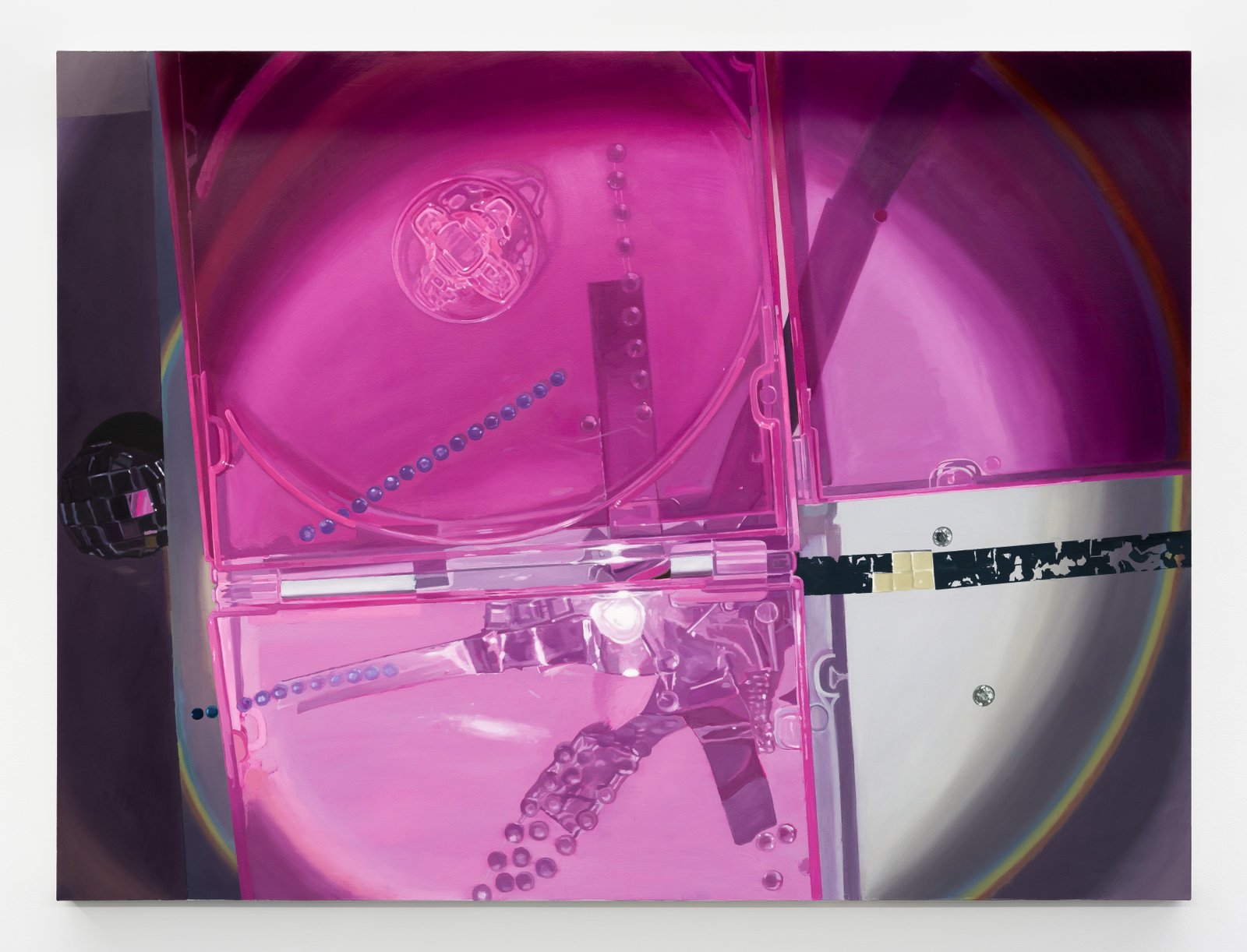
Ingrained in the molecular DNA of each object in her sets exists millennia of technological innovation without which they would not be possible. Generations of scientific progress and all the societal change that has occurred as a consequence has been compounded into the infrastructure that supports modern life. Isaacs’s visual vernacular is made up of the jewels of that infrastructure. There is a paradoxical beauty in how the weight of history has been leveraged into the production of transformative technologies like the plastic bag, which like rhinestones and disco balls, are rendered trivial in their ubiquity.
Mirroring this paradox, the results of Isaacs’s private world-building rituals initially appear playful if not chaotic, while her process of assigning tableau is actually painstakingly laborious. Through countless cycles of meticulous rearranging, the artist maps out miniature anthropocenes complete with unstable constellations of handheld flashlights. These light sources are equally as common as the subjects they light up, yet do not explicitly appear in Isaacs’s paintings. Instead, they exist only through a confluence of glare, haze, and other forms of subsidiary glow; shadow. So while this one-to-one relationship of man-made materials is itself a form of reflection, and in that way its own note within the chorus of coordinated radiances, the nature of the dynamic is also a reminder that reflection is a form of absence.
A similar dynamic exists within photography, the final stage of Isaacs’s pre-productive drawing process, which she uses to collapse her precarious universes into the flat stability of the present, only to reference the final image and re-expand it into corporeal eternity through the timeless vocabulary of oil paint. Considering Isaacs’s use of hidden lights to make her models visible, activating them with an alluring shine, her decision to then paint from photographs of these models suggests an additional layer of circular seduction. She conceals her hand by purposefully omitting the device she uses to produce light, before revealing her hand through the device with which she eventually recaptures it; a camera, a tool that carries with it the implied and undeniable existence of a point of view.
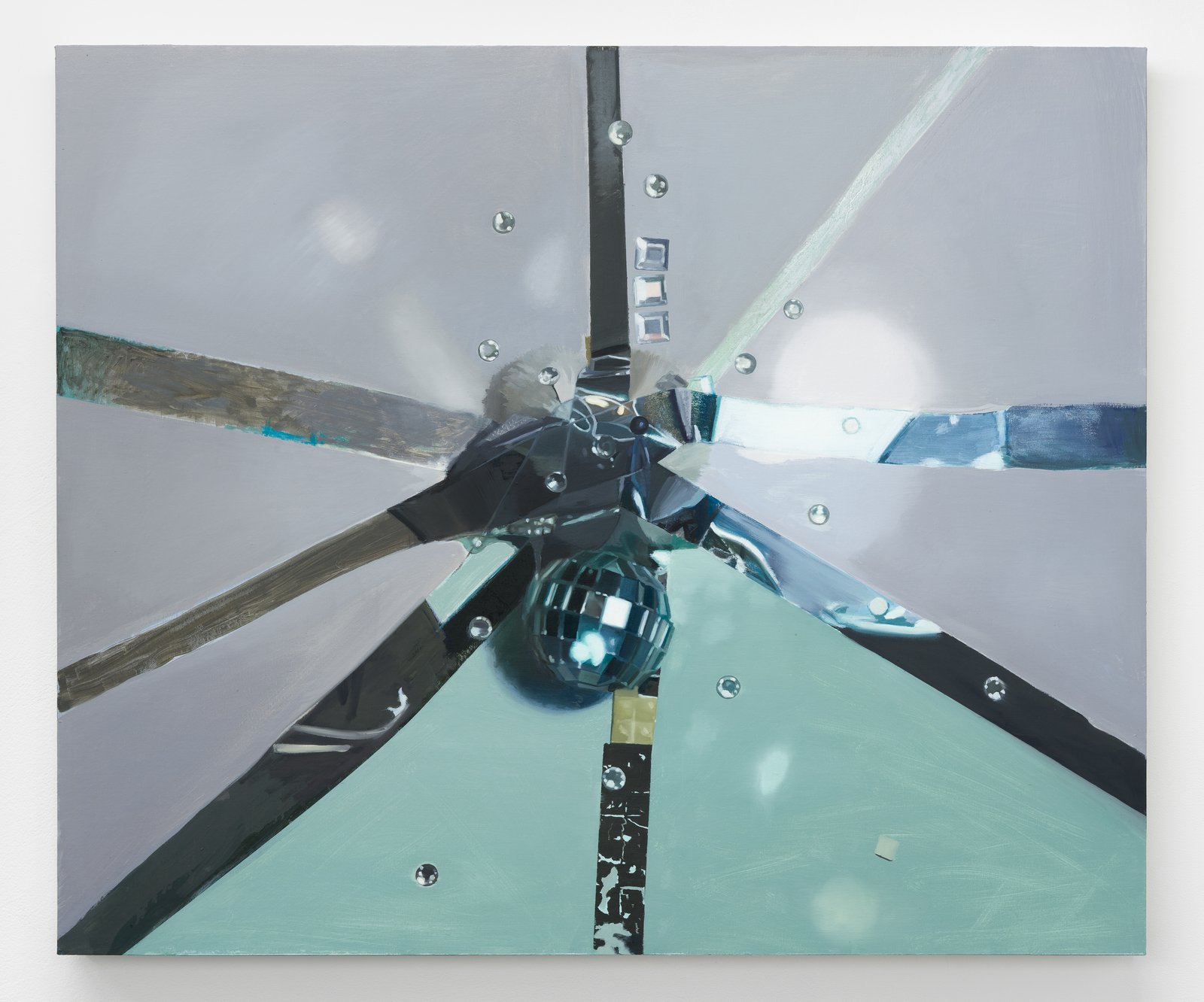
It is fitting then that Isaacs’s drawn-out procedure of set design, lighting, and documentation requires a level of consideration similar to that of a live stage show. As if directing a rehearsal, she takes hundreds of photos to find the right image until she eventually arrives at the source material for her painting–the live event. While the artist has, up to this point, traditionally used a digital Cannon point-and-shoot from 2018 to photograph her sets, for her most recent body of work, she’s begun experimenting with older cameras, including a Nikon Coolpix from around 2002. Within Isaacs’s practice, photography might be best understood as an analogy for the biomechanics of memory formation and, in this way, a reminder that we are all our own unreliable narrators. By transferring decisions to the images these cameras produce, Isaacs celebrates what we subconsciously abstract within our own recollections. Like a ghost in the machine, this humanistic approach stands in stark contrast to the technological apparatus of its vessel.
Through all this tedium, one can glean that what, at first glance, appears to be instantly gratifying or even frivolous within Isaacs’s artistic pursuit is actually the result of a careful process not unlike the level of analysis required of scientific inquiry. In turn, her hand-made astro-masses are imbued with an additional layer of chronology that rings in a counter-melodic harmony against the ontological timeline already embedded in their construction. Given these compounded relationships of material and time, and the sprawl of intertwined evolutionary paths stretching through all other aspects of her work, Isaacs’s decision to render her images in the antiquity of oil paint shoulders a generous poetic irony.
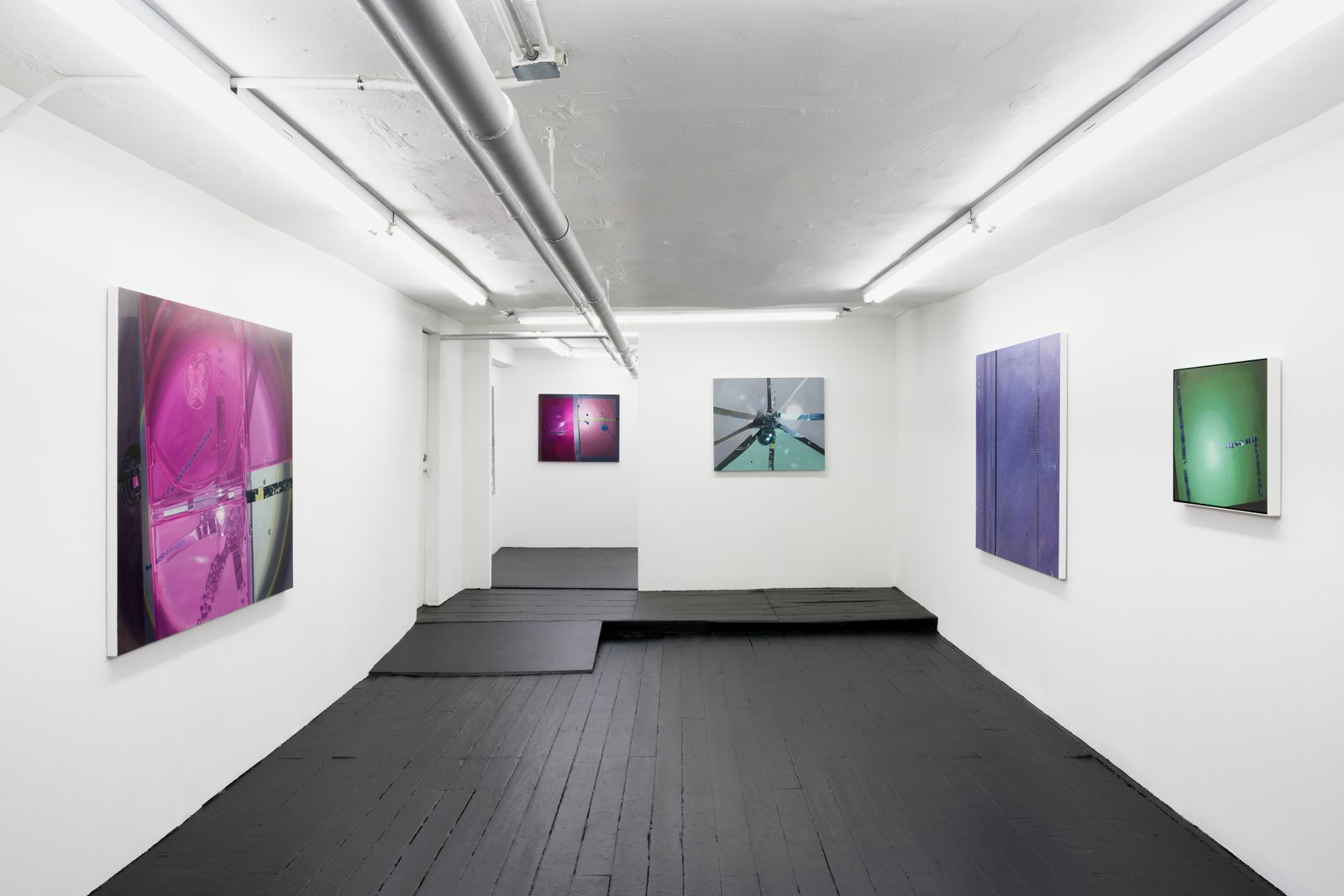
Consider again that within Isaacs’s imagery exists a microcosmic reflection of a world scaled by the energy innovations of the 20th Century. Amidst this newly imposed global existence is the advent of a growing maze of mediations. Isaacs’s process mirrors this, giving body to the epistemological crisis of a world in which everything is and/or is quickly becoming, a representation of itself or something else. Oil painting stands at the beginning of this accelerating labyrinth, but also as an enduring counterpoint. What we understand to have begun simply, as a combination of elemental pigments and seed oils on the walls of caves, has remained all but unchanged as a technology, evolving mostly in refinement and application, while at the same time gaining a relative reverence as an art form. Isaacs’s application of this steadfast medium to encapsulate a theater of the perpetual, from which it is distinct, while also so easily implicated, has the playful feel of using a game of smoke and mirrors to describe a game of smoke and mirrors. And like an actual game of smoke and mirrors, light is pivotal to the experience.
It should go without saying that light as a material is fundamental to the history of art, and this is especially true in the case of artists from Southern California. Artists from the region began responding to the monolithic phenomenon of light in its abundance against an open landscape in the 1960s and have since been canonized within a movement aptly titled “Light and Space.” Isaacs, who grew up in Los Angeles, takes a more zoomed-in approach, and by considering the mechanics of how light moves and changes through synthetic materials in confined spaces, illuminates the implications of its power as a tool of fragmentation, transfiguration, and the eventual conversion of society through the comparative mapping of one realm onto another. From the transformation of photosensitive grains of silver by light particles in filmmaking, to the development of light plots in live production design, the mechanics of light as a physical material at all scales has been fundamental to the mediation of our hyper present.
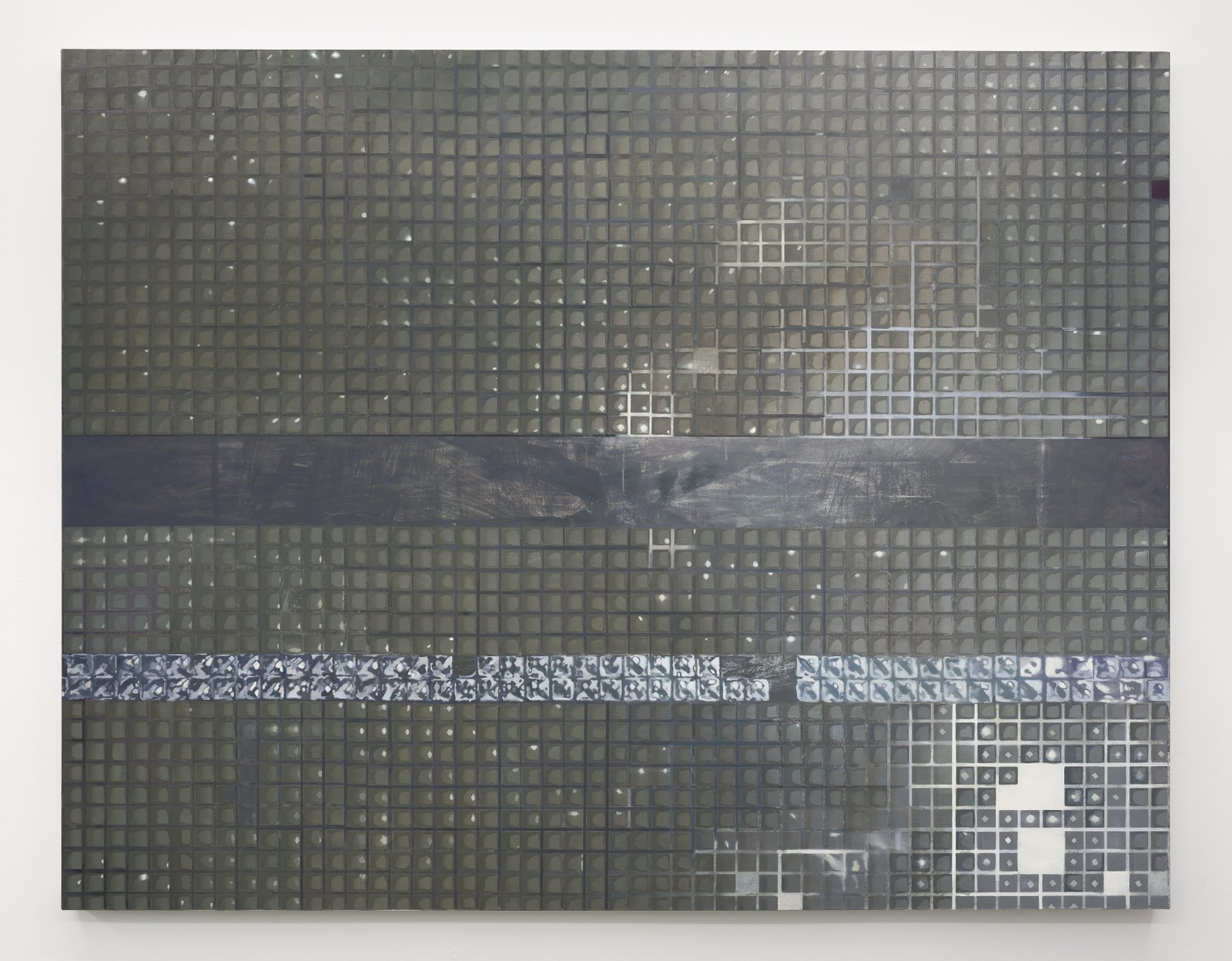
Similarly, the optical properties of oil paint and its inherent luminescence has been fundamental to its utility as an art form, and this is especially true for the work of Isaacs, which, in its deep and resonant flatness, is a beautiful articulation of how we experience that hyper present. Isaacs prepares her surfaces in black gesso. Echoing Italian masters like Caravaggio, whose works are filled with bold contrasts, she cuts into the darkness of her surfaces to set each composition using Chiaroscuro, a Renaissance technique popularized during the Baroque period. Then, through a process that could easily be compared to geological stratification under the weight of gravity, Isaacs slowly compresses layers of paint into a single plain of virtuality, eventually giving soft radiance to the extremes with which she begins. Looking into them is a bit like applying pressure to a spring– her paintings are charged with a visual immediacy waiting to jump, and yet this immediacy flickers in neutrality, forever held at bay by a feeling of impenetrable density only achievable in paint, and over time.
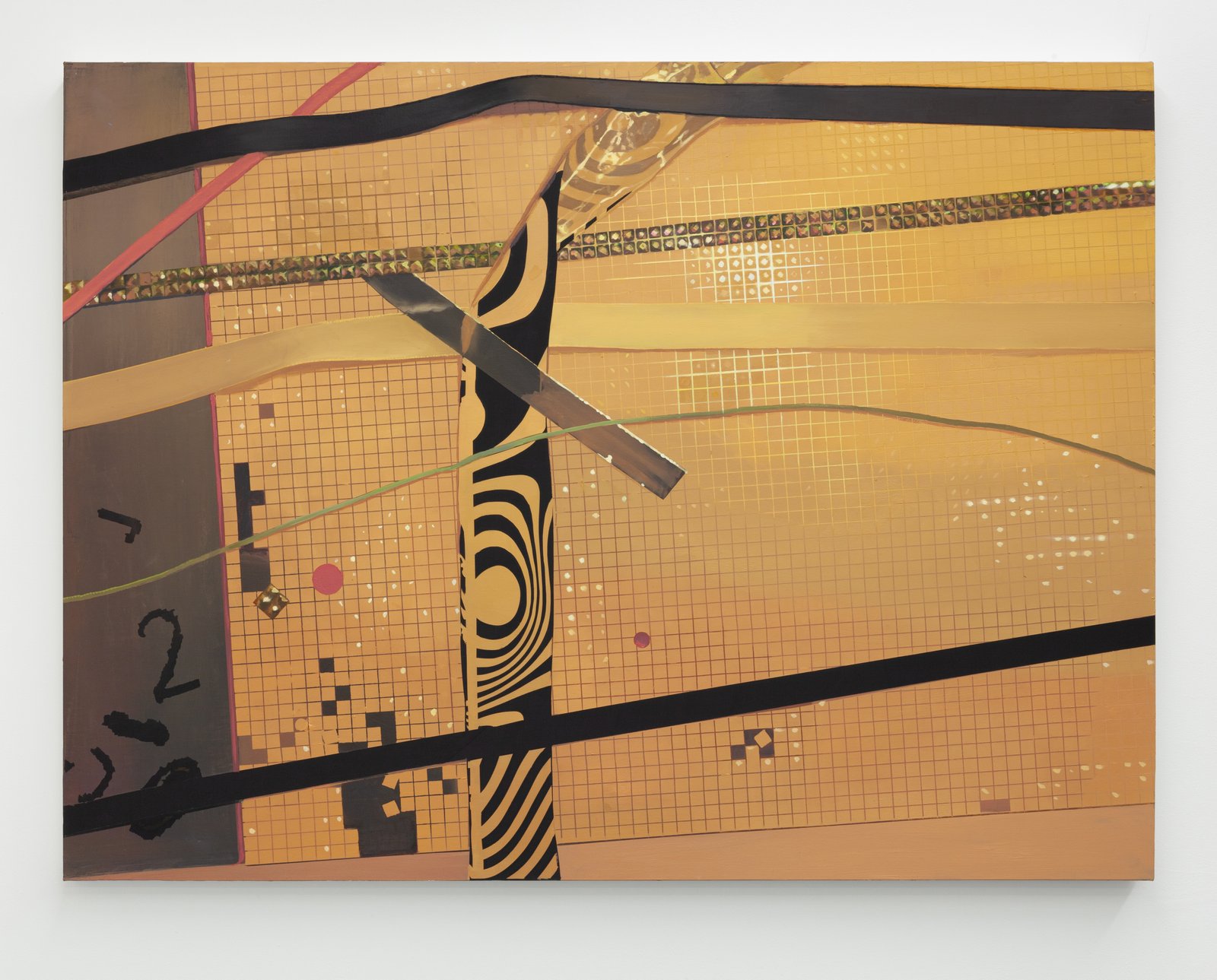
Looking back to her solo exhibition at Theta in New York City (Fall of 2023), one gets the sense that Isaacs understands her images as resonant chambers and is willing to play with their amplitude in a variety of ways. The most notable of these methods is her setting of the viewer’s relative proximity to her subject matter across surfaces. Viewing multiple works by Isaacs across an exhibition produces a feeling of zooming in and out, creating an experience more akin to observing an expanding universe than considering art. The implication of such a large scope, one which borders on the infinite, approaches inconsequence in its unfathomability. This is no matter to Isaacs. Taken out of context, the artist says it best: “painting doesn’t need much of an excuse.”
Even so, the sublime can always be found in the perfection of opposing forevers, especially when you look closely. Like the life cycle of celebrity skin, there is a beautiful dissonance between the hours of preparation required to immortalize impermanent beauty and the immediate eternity of imagehood for which it is so often prepared.
March 26, 2024
